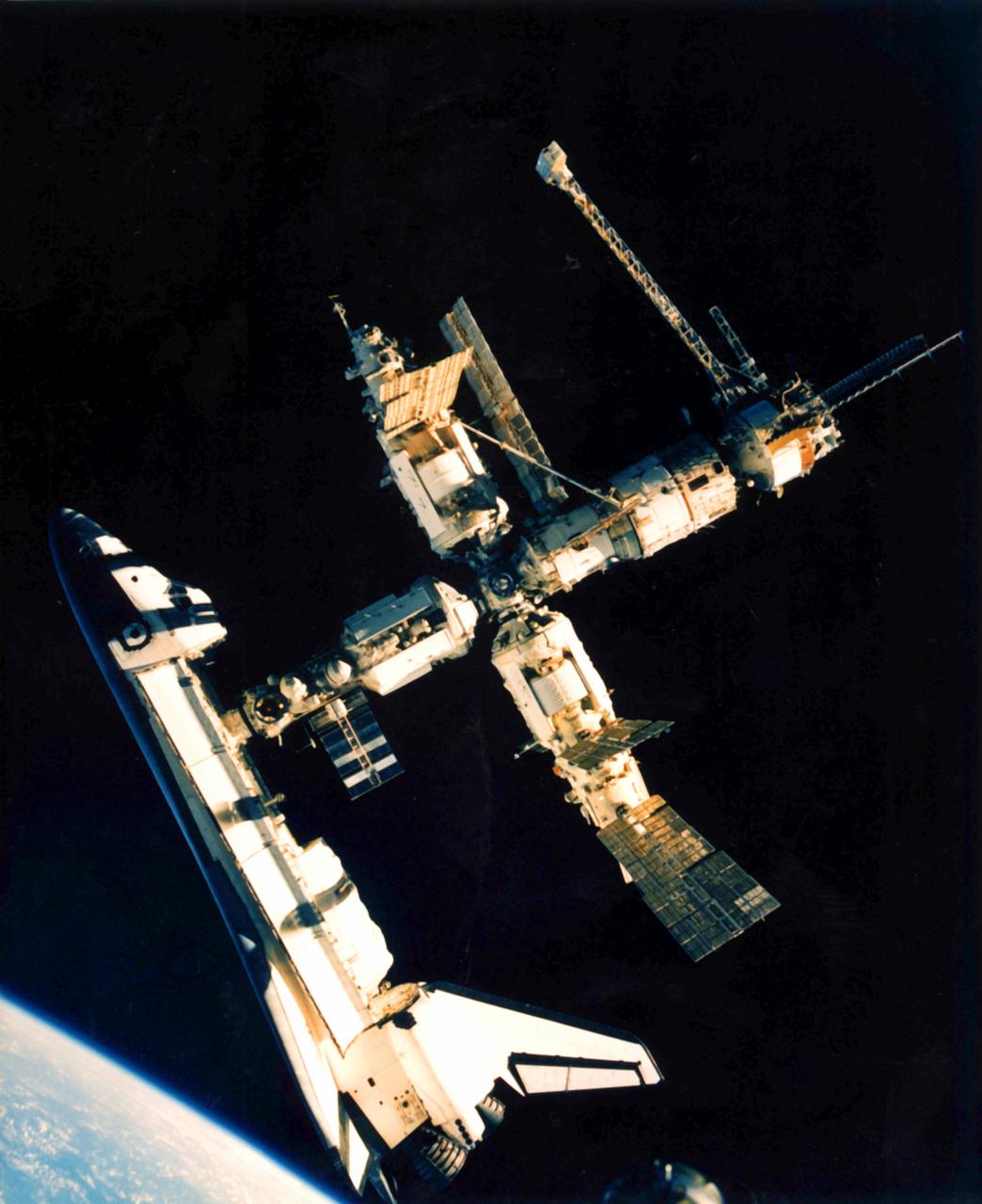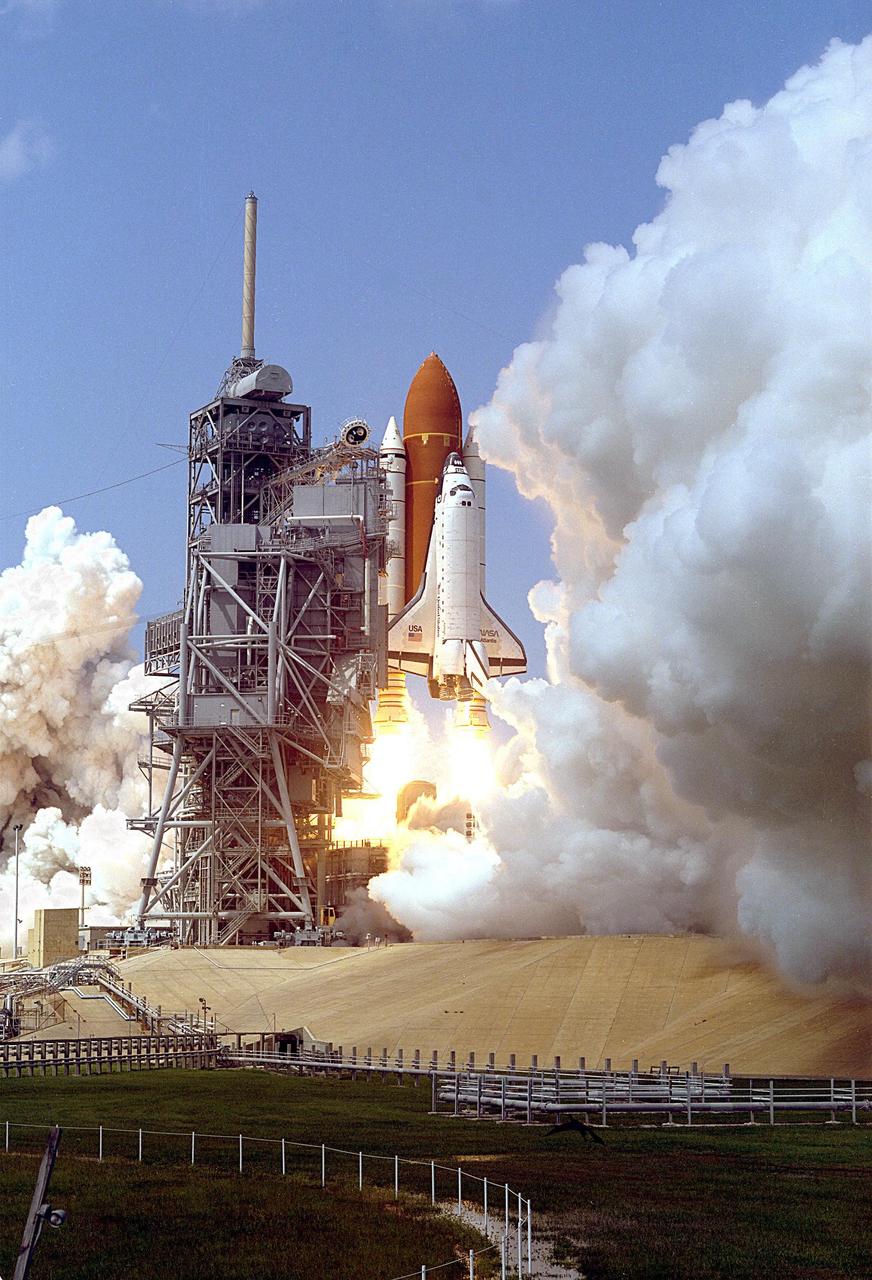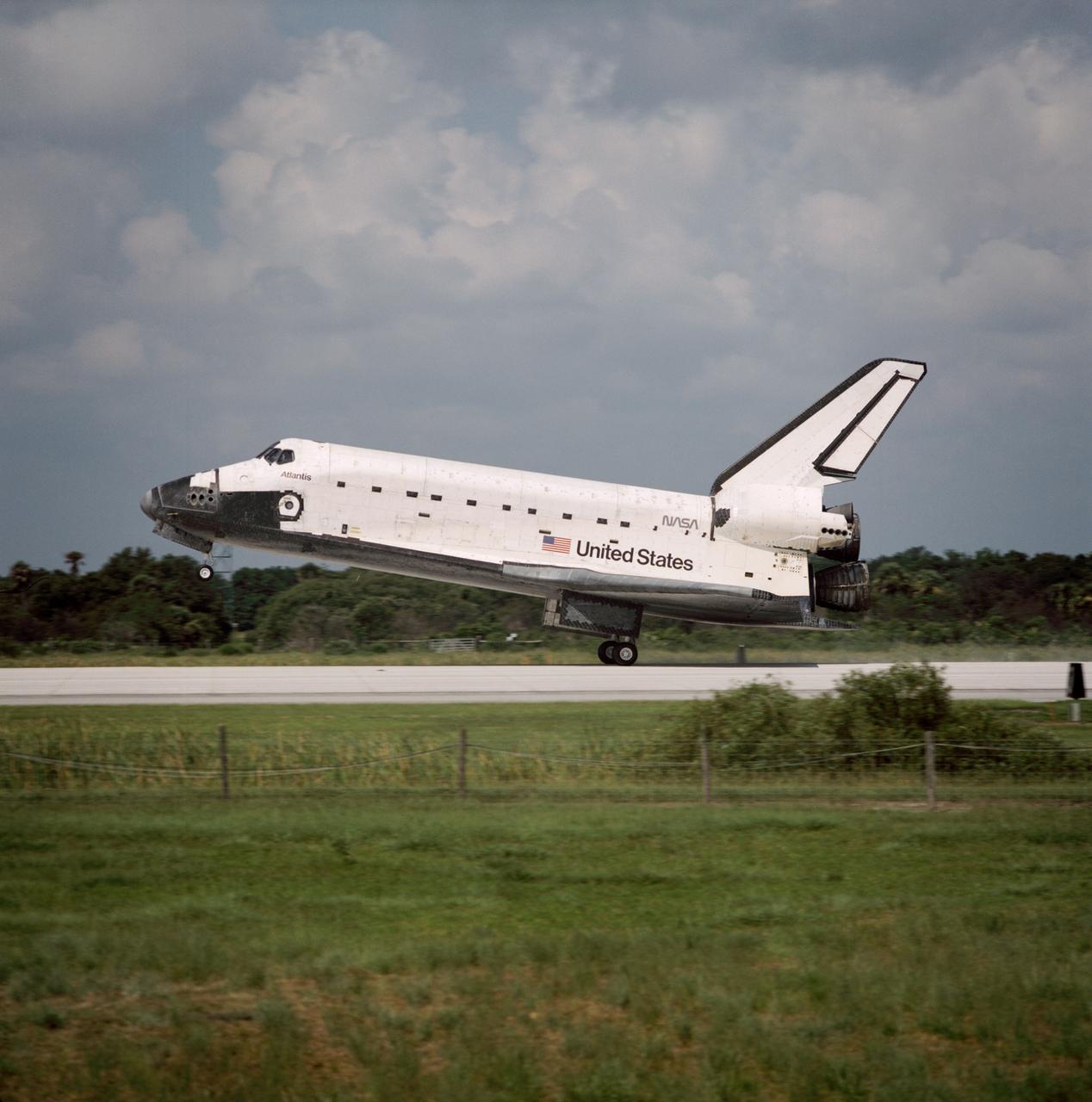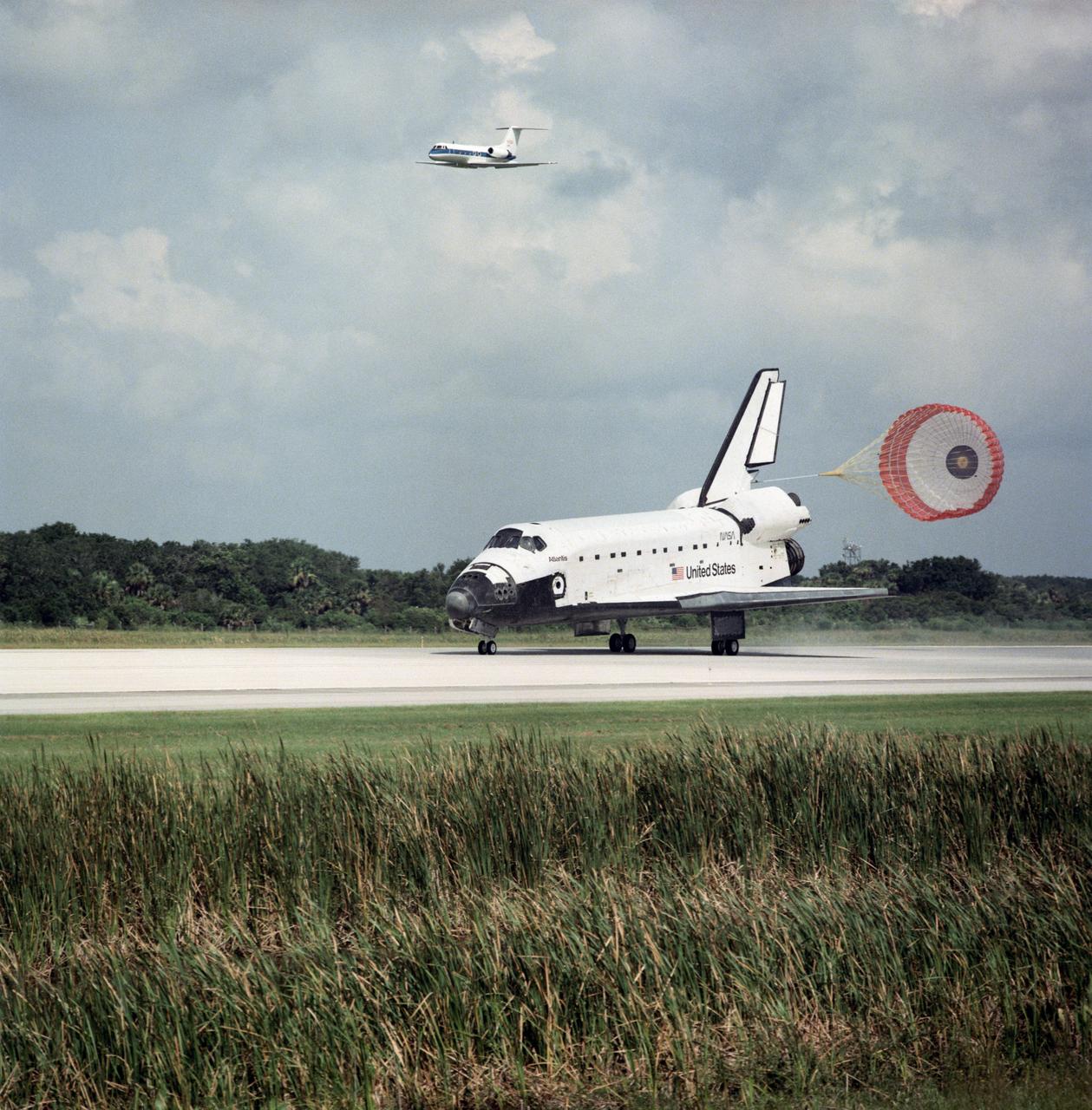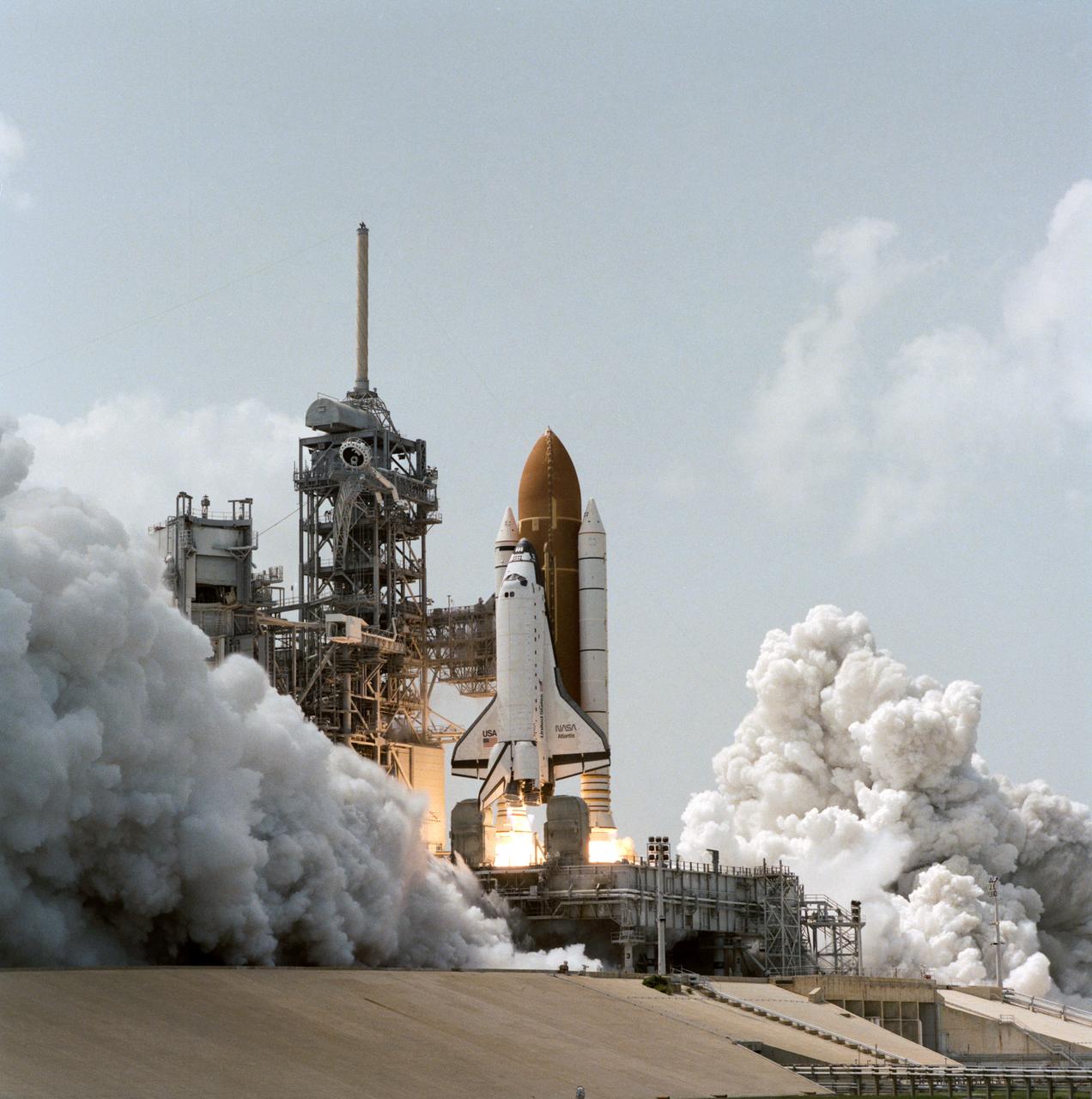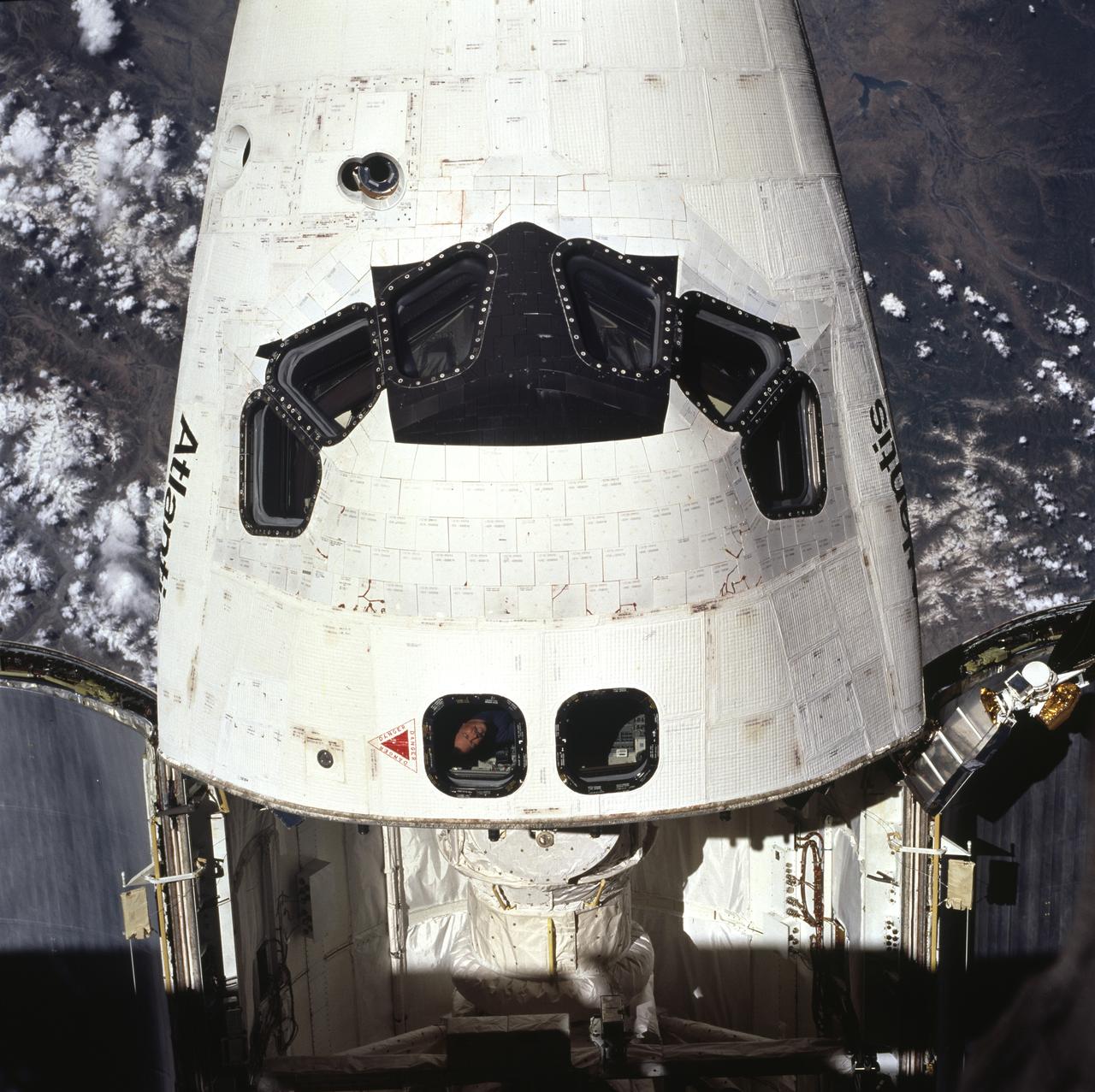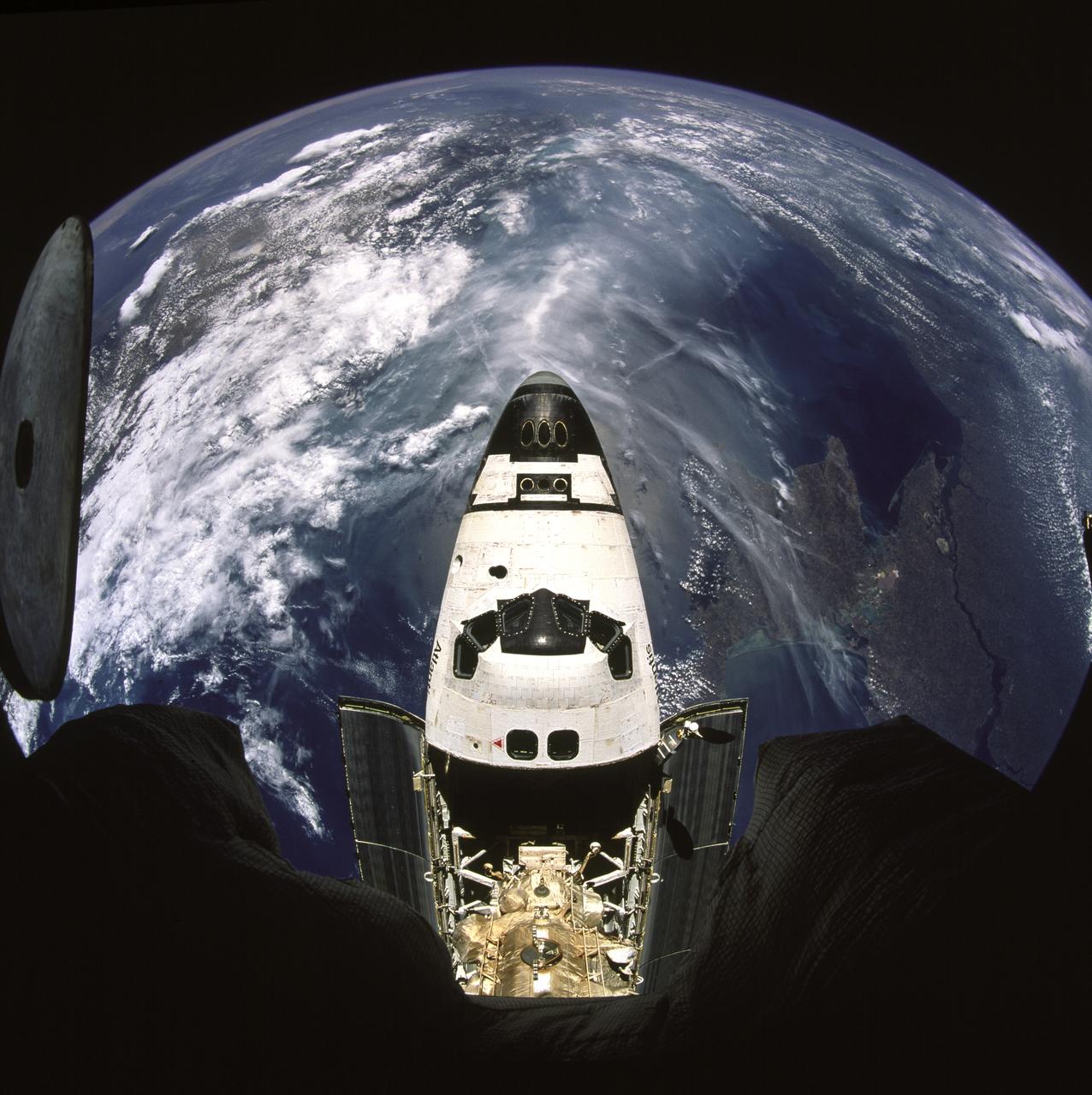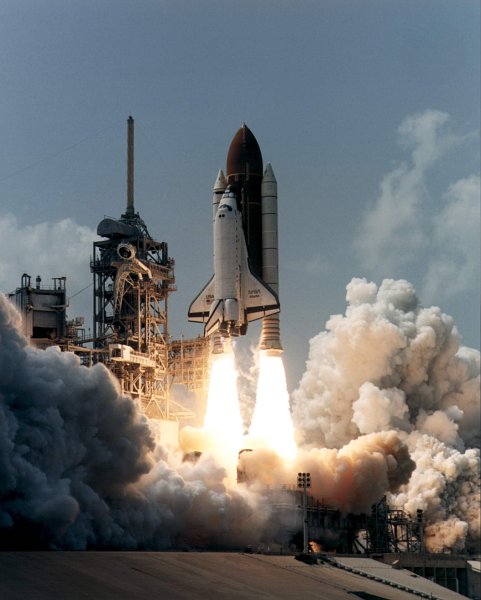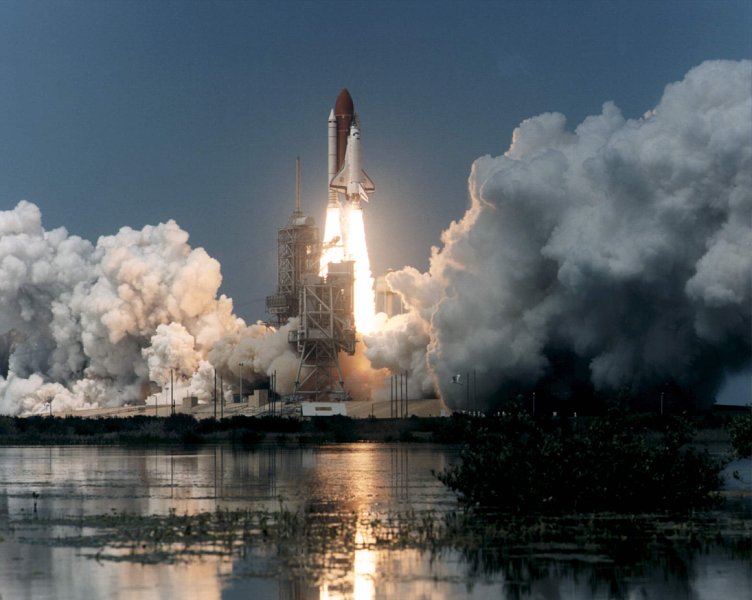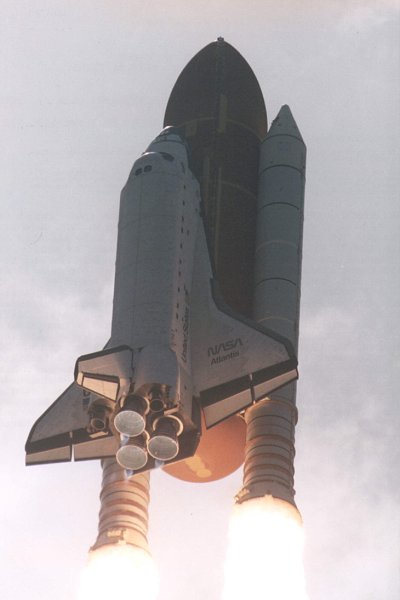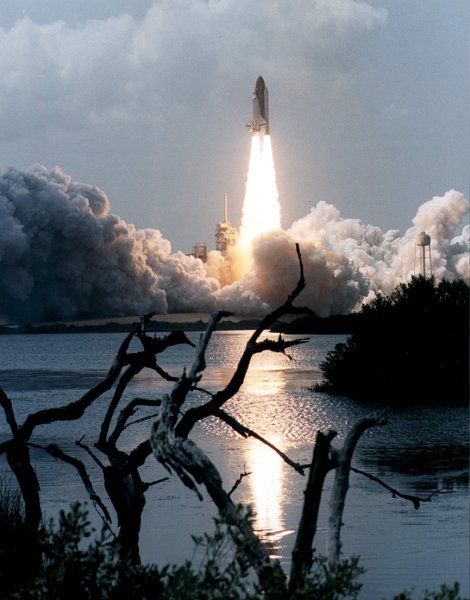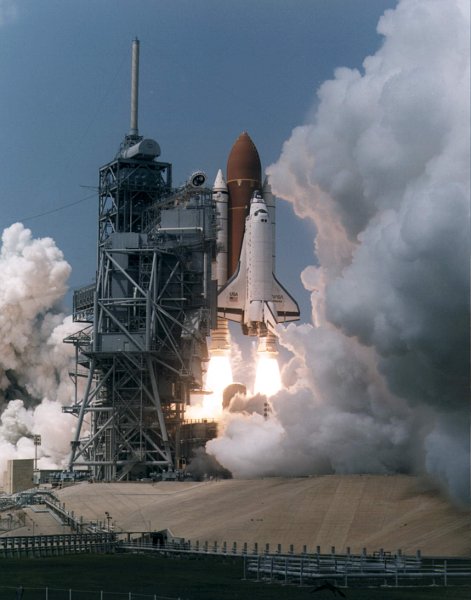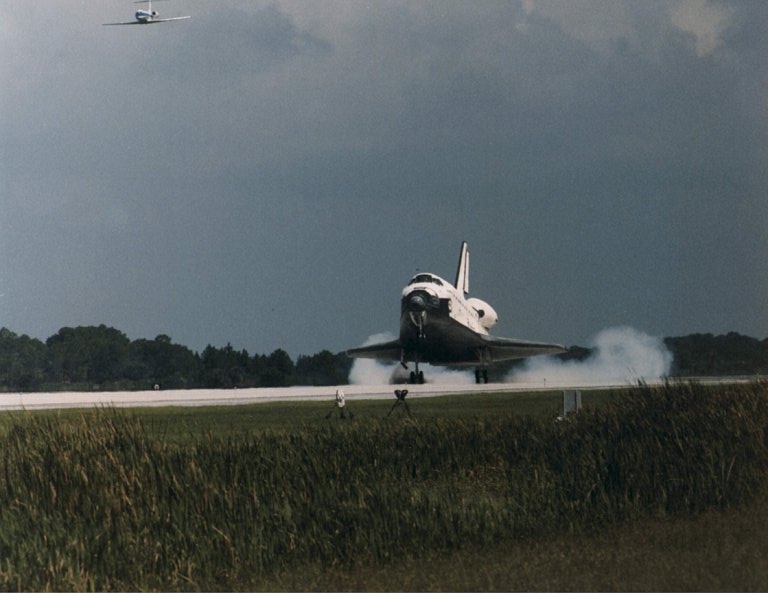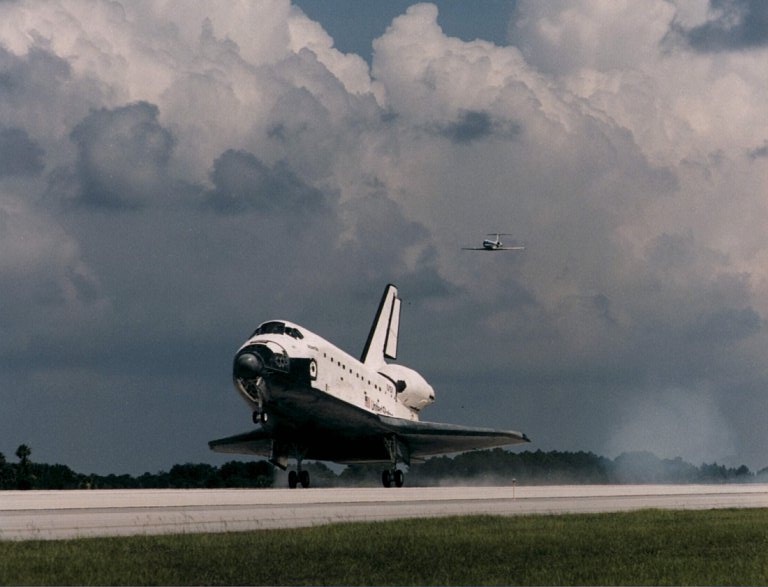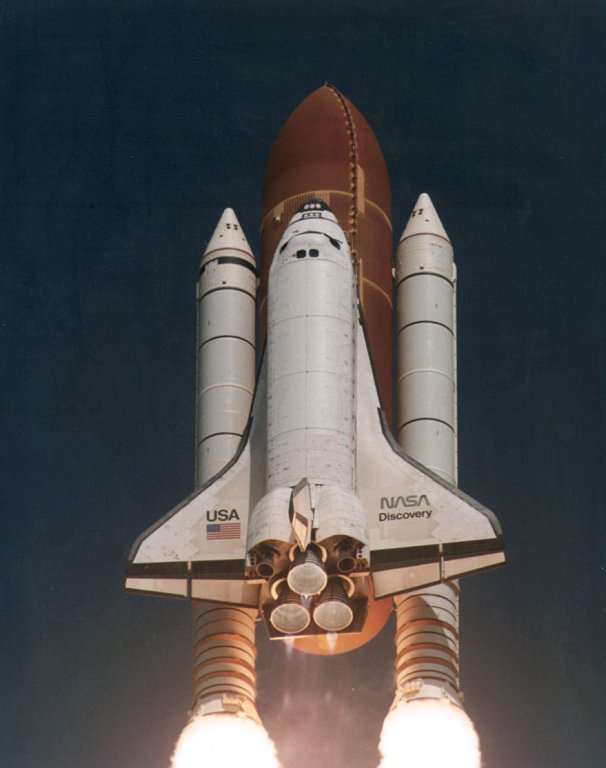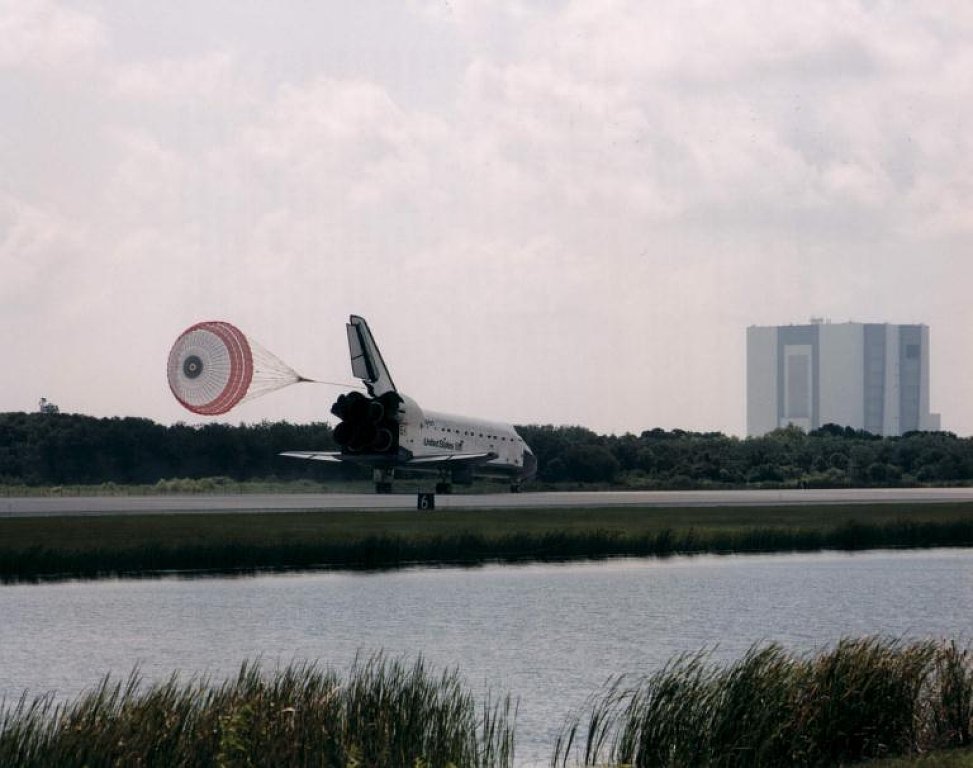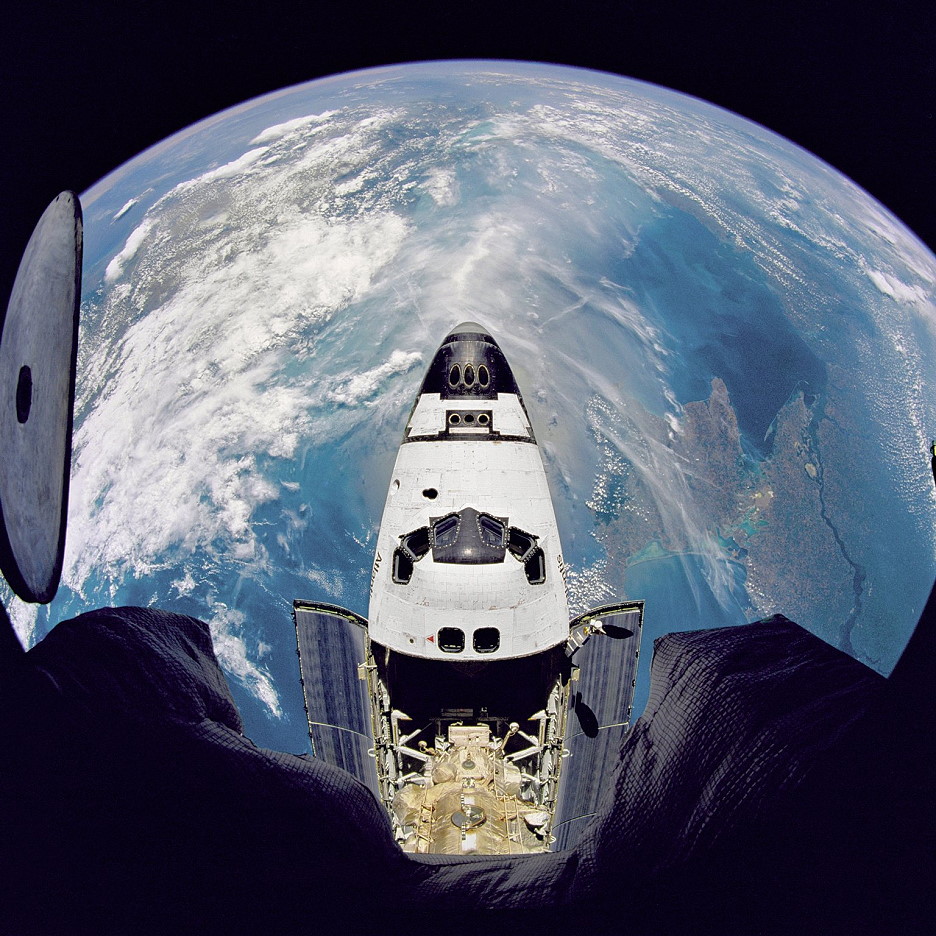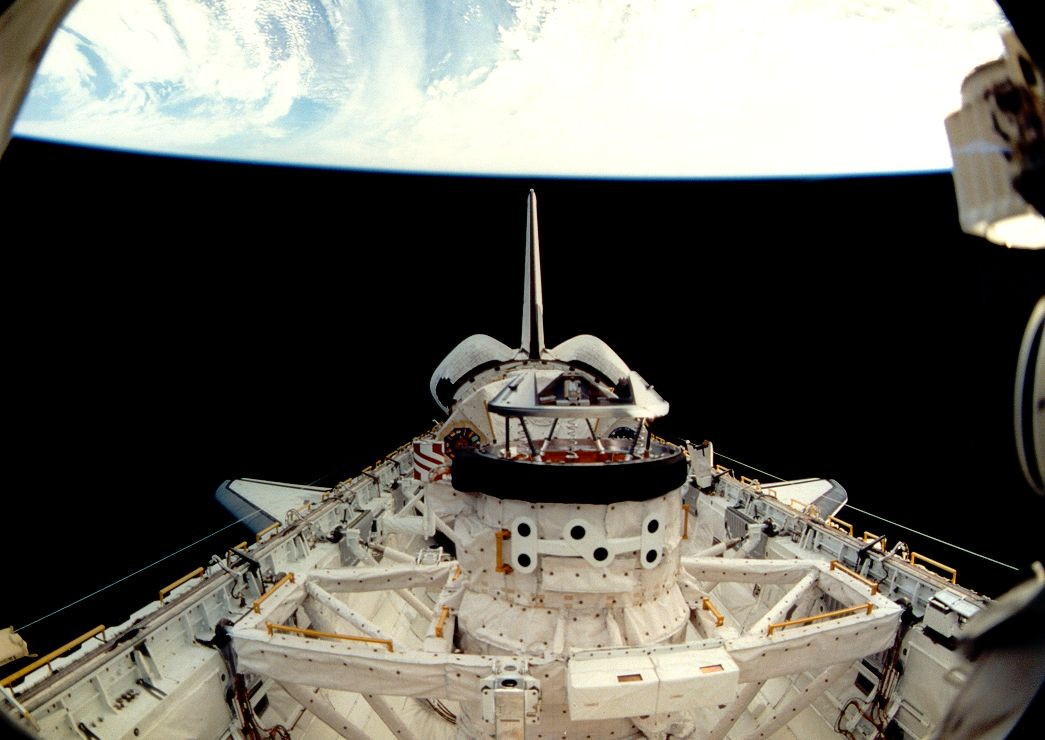STS-71 Fact Sheet
By Cliff Lethbridge

STS-71 — Atlantis
69th Space Shuttle Mission
14th Flight of Atlantis
100th U.S. Manned Space Flight
Crew:
Robert L. “Hoot” Gibson, Commander
Charles J. Precourt, Pilot
Ellen S. Baker, Payload Commander
Gregory J. Harbaugh, Mission Specialist
Bonnie J. Dunbar, Mission Specialist
Embarking To Mir:
Anatoly Y. Solovyev, Mir 19 Commander
Nikolai M. Budarin, Mir 19 Flight Engineer
Returning From Mir:
Vladimir N. Dezhurov, Mir 18 Commander
Gennady M. Strekalov, Mir 18 Flight Engineer
Norman E. Thagard, Mission Specialist
Orbiter Preparations:
Tow to Orbiter Processing Facility – November 22, 1994
Rollover to Vehicle Assembly Building – April 20, 1995
Rollout to Launch Pad 39A – April 26, 1995
Launch:
June 27, 1995 – 3:32:19 p.m. EDT. Launch was originally targeted for late May, 1995 but was delayed to accommodate Russian space program activities in preparation for the first Shuttle/Mir Space Station docking.
A series of spacewalks from Mir were required to reconfigure the space station for docking operations. In addition, there was a delay in launching the Russian “Spektr” module which contained U.S. research hardware.
June 23, 1995 launch attempt was scrubbed when lightning prevented loading of the external fuel tank with liquid fuel. June 24, 1995 launch attempt was scrubbed at the T-9 minute mark due to poor weather at the launch site. June 27 launch occurred as scheduled with no delays.
Landing:
July 7, 1995 – 10:54:34 a.m. EDT at Runway 15, Kennedy Space Center. Rollout distance was 8,364 feet. Rollout time was 51 seconds. Mission duration was 9 days, 19 hours, 22 minutes, 17 seconds. Landing occurred during the 153rd orbit.
Mission Summary:
In addition to holding the distinction of being the 100th U.S. manned space flight, STS-71 marked several other important milestones.
The mission featured the first on-orbit changeout of a Space Shuttle crew, and for the first time a U.S. spacecraft returned to Earth with more occupants than when it departed.
The docking of Atlantis to Mir also created the largest man-made object in space, weighing about 225 tons.
Atlantis made its historic docking with Mir at 9:00 a.m. EDT on June 29, 1995 about 216 nautical miles above the Lake Baykal region of the Russian Federation.
The Orbital Docking System (ODS) of Atlantis with Androgenous Peripheral Docking System served as the connecting point to a similar “Krystall” docking module aboard Mir. ODS, located in the forward payload bay of Atlantis, performed flawlessly.
After hatches on each side were opened, the STS-71 crew passed over to Mir for a welcoming ceremony. On the same day, the Mir 18 crew officially transferred responsibility for Mir operations to the Mir 19 crew, which was carried into orbit by Atlantis. The two crews also switched spacecraft.
For five days, joint U.S./Russian operations were conducted. These included biomedical experiments and the transfer of equipment and supplies between spacecraft. The three-member Mir 18 crew, including U.S. astronaut Norm Thagard, carried out an intensive program of exercise to aid in preparation for their return to Earth after three months aboard Mir.
Numerous medical samples and scientific data were transferred from Mir to Atlantis, as well as a broken Salyut-5 computer. Items transferred from Atlantis to Mir included 1,000 pounds of water, equipment to facilitate spacewalk repairs to the Spektr module and supplies of oxygen and nitrogen to raise the air pressure aboard Mir.
Following a farewell ceremony, the Mir hatch was closed at 3:32 p.m. EDT on July 3, 1995 and the Atlantis ODS hatch was closed 16 minutes later.
Prior to the undocking, the Mir 19 crew temporarily abandoned the space station aboard their Soyuz spacecraft so they could record images of the event. The Soyuz spacecraft unlatched from Mir at 6:55 a.m. EDT on July 4. 1995 and Atlantis undocked from Mir 15 minutes later.
General Purpose Computer 4 (GPC 4) aboard Atlantis was declared failed during the mission when it ceased synchronizing with GPC 1. In-flight troubleshooting determined this was an isolated event, and the computer operated satisfactorily for the remainder of the mission.
SELECTED NASA PHOTOS FROM STS-71
